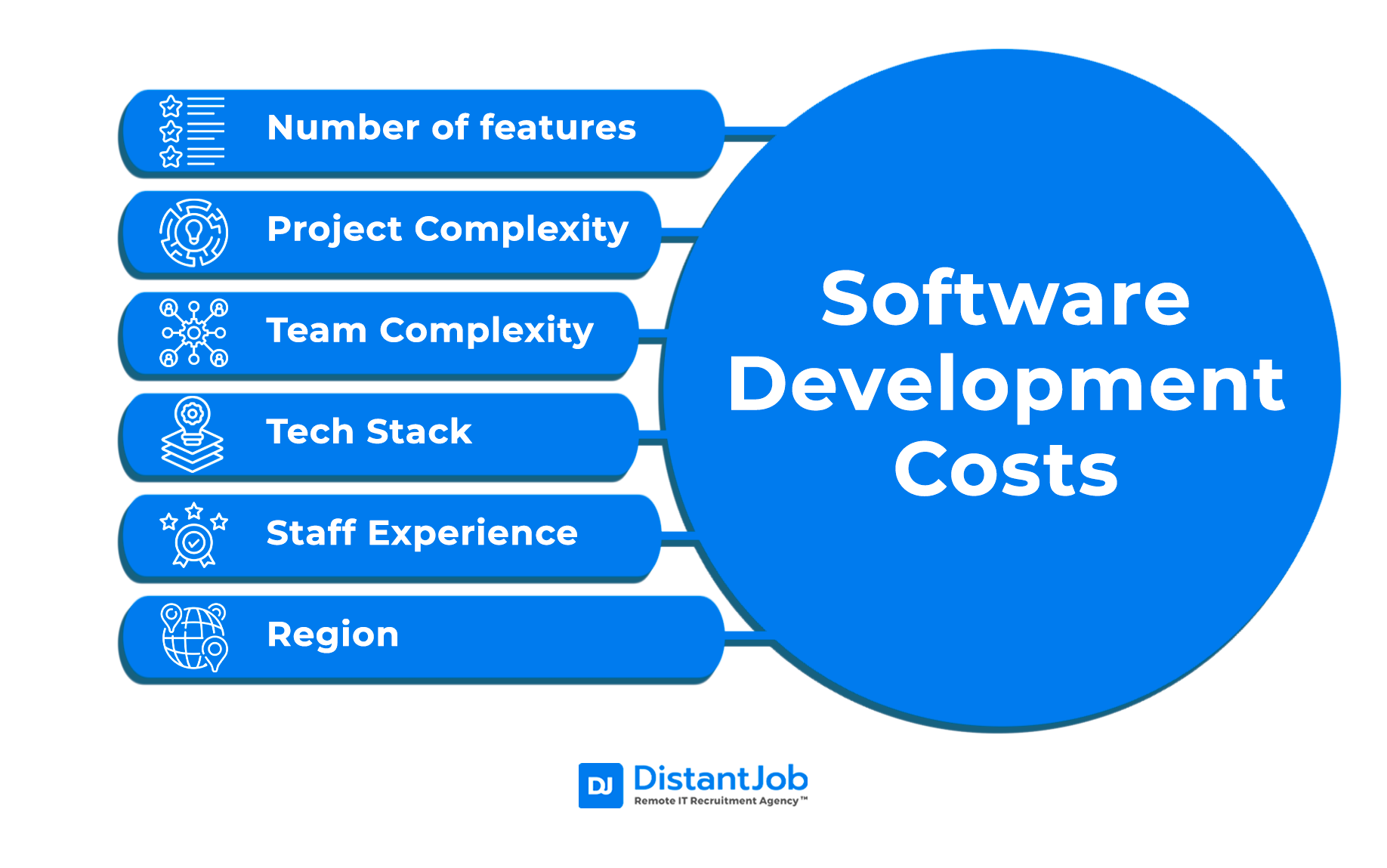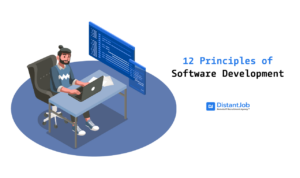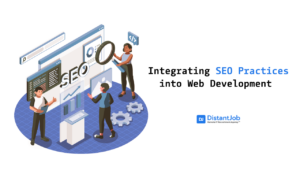During the design phase of a project, accurately mapping out software development costs is critical, as many projects tend to exceed their initial budget. A study by McKinsey & Company in collaboration with the University of Oxford, shows that 66% of enterprise software projects experience cost overruns, and a third go beyond the estimated schedule, with almost 20% failing to meet the promised benefits. A precise cost estimation strategy is essential from the start. After all, it is the budget that determines the scope of the project and its capabilities.
It’s common to face the ‘cone of uncertainty’ at the project’s inception, where precise costs are elusive. As the project unfolds and details are fleshed out, cost predictions become clearer. So detailed project comprehension and outcome visualization are your most powerful tools during the estimation phase of your project.
In this article, we will explore a structured approach to assess your software development expenses, featuring real-world cost scenarios:
A Proven Algorithm for Cost Estimation in Software Development
In my role, I’ve overseen a variety of software projects, and I’ve learned that understanding the nuances of each type is crucial when estimating costs.
To correctly estimate how much expenses will be spent on the implementation of a software development project, it is necessary to act on the following steps of the algorithm:
1. Project Complexity: From Theory to Estimate
The project’s complexity determines the cost. Simple as that. So, the more functions you need to implement in a project, the longer it will take to implement its entire life cycle.
Additionally, never forget the post-release phase of the software. It will need to be updated, and improved, and fixed bugs that will pop up during interaction with it. All of this needs to be budgeted for.
Some basic software with minimal functionality, simple designs, and no integrations to third-party servers can be made by an inexperienced specialist. If this is what you were looking for, the development will be inexpensive and take several weeks.
But if you want something worthwhile, it is better to trust professionals and not be attached to too small amounts. After all, everyone who has studied and practiced for many years wants to get a high level of income for hard work for several months.
According to software development cost calculations, enterprise software always comes out more expensive. But if you want to optimize your costs and stay with highly qualified professionals, then you should consider hiring remote developers. Here´s why:
- Reduce Office and Infrastructure Costs: You don’t need to provide a workplace for remote employees, computers, office equipment, and other resources. This allows you to reduce the cost of the overall development cost significantly.
- Expanded access to the global labor market: Remote developers = access to all the talents of the global labor market, where the cost of services may be lower or in a more competitive range.
- Reduce Tax and Insurance Costs: By working with remote developers, a company can avoid the additional costs of social security, property taxes, and health insurance.
- Flexibility and work time optimization: Remote developers are often more flexible in how they manage their work time. What is so important for the use of working hours. For example, developers from other parts of the world can work on a project while local developers rest, which increases efficiency and reduces development time.
Case Scenario: A basic e-commerce site could range from $20,000 to $100,000, whereas a large-scale custom CRM system may start at $50,000 and can go well into the hundreds of thousands, depending on the specific features and integrations required.
2. Scope of Work: The Cornerstone of Cost Estimation
To estimate the cost of software development, you need to consider the amount of work ahead. In particular, the initial costs and those cost items that may become relevant after the project is scaled up. Think about:
- the time frame that is supposedly needed to complete the project – it is better to take time with a margin;
- the necessary resources (both human and material) – try to decide what you need;
- possible risks – unfortunately, knowingly increasing the amount of work is also not a good idea, because there is a risk that you will waste your budget.
When forming the question “How to estimate the costs of software development?” also set clear expectations regarding the functionality, timing, and cost of the project.
For this, various methods and tools are used: peer review, analysis of similar projects, etc.
3. The Role of Team Structure in Budgeting
One of the main factors that affect the cost of software development is the choice of team or individual specialists. Think about which professionals will work with you, because they need to be paid, and the difference in their salaries is enormous.
Once the scope of a project has been determined, it is essential to analyze the technology stack, complexity level, and team structure. This also means determining which specialists are necessary to start and finish the task, and what skills each individual should possess.
When the appropriate specialists and the correct system are implemented, the project can be accomplished within the specified timeframe and allocated budget.
4. Strategic Cost Management with Real-Time Tracking
An integrated way to estimate and control the cost of your software development project can be setting up a project cost tracking template.
How to set up an effective cost-tracking system?
- Create a project to track the cost of your dev team. We recommend Asana, as it worked best for us
- Create tasks for each expense you plan to track. Consider using categories such as “Hardware”, “Software”, “Design”, and “Testing”.
- Assign each task to the appropriate team member.
- Set a deadline for each task.
- Create a custom field for tracking the cost associated with each task.
- Create subtasks for each task if necessary.
- Set up automated reminders for team members to submit their expense reports
- Generate reports to track the overall cost of the project.
- Track progress by setting up visual markers to indicate when tasks are completed.
- Use the project dashboard to view the overall cost of the project and compare it to the budget.
5. Choosing the Right Platform: Cost Implications
Formulate as much information as possible regarding its implementation. These actions will bring certainty and become an important basis for the implementation of the original idea in practice.
You can stop at one thing, for example, only on IOS, Android, or Windows. Each of these platforms has its specifications both in terms of the required resources – specialists, time, and financial costs and in terms of working tools – programming languages, frameworks, libraries, etc.
Yes, it is best to choose cross-platform. That is, to create software adapted to all operating systems and devices from which interaction takes place. But then you have to spend a lot of money at once. If your business justifies the investment, do not hesitate and choose all platforms at once.
6. Incorporating Contingencies into Your Budget
Unforeseen expenses may arise during the software development process. Some of these may be due to technical difficulties, changes in requirements, or unforeseen problems. Here are some examples of contingencies to watch out for:
- Changing requirements: Implementing new features or changes will require additional time and resources to implement them.
- Technical Issues: Incompatibility of various system components, unexpected errors, problems with integrating third-party services, and other technical problems can all cost additional time and effort on the part of developers.
- External factors: If these providers of cloud platforms, web services, etc. change their terms or experience problems with their operation, this leads to unexpected costs and delays.
- Security Issues: There may be software vulnerabilities or security risks that may require additional efforts to detect and fix.
- Changing market conditions: Changes in the market or in business processes may require additional work to adapt the software. For example, changes in legislation or industry requirements may require changes in functionality or the introduction of new security standards.
It is important to consider the possibility of unexpected costs when planning the costs of a software development project.
7. Complexity Costs: Simple vs. Advanced Software
The complexity of the software greatly influences development costs. Consider how it is determined and affects the term of work of specialists.

1. Basic Software
Basic software is characterized by a set of simple basic options. For example, it could be a user-friendly login and a standard subscription that uses an email address. The simplicity of design is another plus of such software. It does not provide for the integration of additional services.
The same applies to processing large amounts of data. Such software is not aimed at such complex tasks. Therefore, the development period is quite short. The creation of basic software takes from 1 to 2 months. And this means that the client company can quickly get the expected result from the IT specialists with whom it cooperates.
2. Medium Level Software
In addition to the basic functionality, there are other options. For example, it can be the integration of additional services, payments, real-time communication, and powerful analytics that allow you to evaluate the effectiveness of the project. The design in this case is also more complex, which is reflected in the personalization of UI / UX.
Since such software has a number of additional options, it takes more time to develop it than in the previous example. Here, IT specialists need to work from 2 to 6 months.
3. Complex Software
To develop complex software, a team of IT specialists needs to spend more than six months of time. Such terms are quite understandable and justified, given that this software has a huge functionality. The design takes place at an integrated level, which provides broad program support.
Options include third-party integrations, synchronization, data encryption, and video content. Productivity optimization makes such software very effective. And compatibility with various hardware and software becomes another significant advantage.
So, the time that needs to be spent on its development depends on the complexity of the software. This also affects the budget and the demand for the level of specialists who should be involved in this case.
8. The Recruitment Model Effect: Freelancers vs. Remote Agencies
Finally, it is worth touching on one more additional aspect. This is a recruiting model. The prices set by an IT agency or individual freelancers can vary significantly.
But most importantly, these two formats of cooperation freelancing and remote work are very different in quality.
Hiring a person freelance or outsourcing, you will never fully understand who is in front of you. Such a specialist takes less money but does not give any guarantees of high-quality work performed in compliance with deadlines.
Therefore, here, you risk paying a double price, because you cannot be sure of the conscientiousness of the performer. And this will be much more expensive than hiring responsible people for normal remote cooperation.
Turning to a recruiting agency such us DistantJob and hiring a whole team of IT professionals or individual specialists, you can be sure that software development will be of high quality and timely. You’ll have experts on your team who fulfill your technical requirements and adapt smoothly to your company’s processes and culture.
9. Leveraging Tools for Accurate Cost Estimates
Whether you’re planning a small application or a large-scale enterprise system, you might consider testing modern tools that have emerged to guide businesses through the complex web of estimation, offering clarity and precision, such as a calculator. For example, this online AI calculator simplifies the estimation process by analyzing your project’s unique variables such as scope, technology stack, team composition, and projected timelines. It empowers you with data-driven insights, enabling you to craft a financial strategy that is both robust and adaptable.
Final thoughts
In conclusion, the journey of bringing a software project to life is fraught with challenges, chief among them being the management of development costs.
As a Technical Project Manager, I’ve learned that you can’t just ballpark figures. Each project has its own identity, and costs can vary widely. It’s not just the development you’re paying for but also the expertise, the integration, and the potential for business growth these solutions unlock.
Accurate cost estimation is not just about numbers—it’s about understanding the intricate dance between technology, talent, and time. Partner with DistantJob to ensure that your project is not only cost-effective but also engineered for success by the best remote developers the tech world has to offer.




